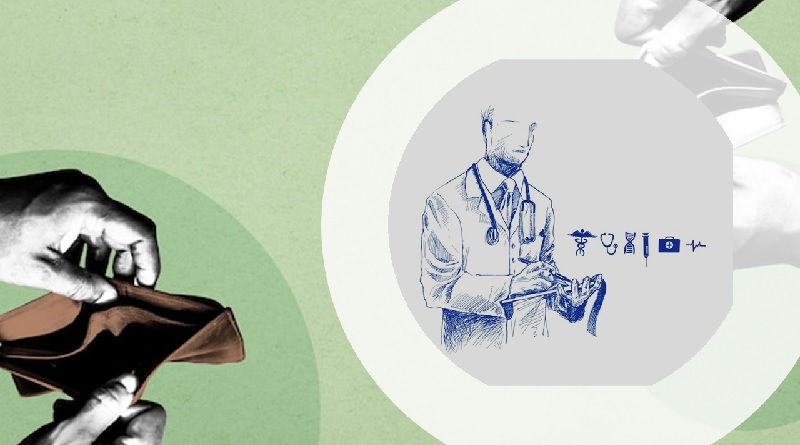The likelihood of a prolonged economic recession has increased as inflationary pressures intensify and interest rates rise.
Equity markets have reacted with a sell-off, but some industries, notably healthcare, have done better than others.
The MSCI World Health Care Index returned -10.3% for the year ended June 30, while the more general MSCI World Index fell by about twice as much.
It is not unexpected that the healthcare industry is demonstrating resilience. Since 2000, there have been five global equity bear markets, with the sector’s downside capture ratio averaging roughly 51%. A statistical indicator of an asset’s success in bear markets is the downside capture ratio.
But the health care sector is also made up of other businesses that operate independently. Rising interest rates, rising labour costs, and other macroeconomic factors have varied effects on each.
Investors who keep these factors in mind may be able to maximise the defensive qualities of the health care industry while also setting themselves for growth once the next economic expansion gets underway.
The best defence
Managed healthcare: These businesses rank among the sector’s most protective.
For starters, insurance contracts normally last one year, with the revenues invested in securities of short duration that are renewed. Rising interest rates frequently increase the profits of these businesses.
In response to inflationary pressures, premiums (and thus earnings) often increase. Health insurance firms negotiate rates for commercial plans one to two years in advance, giving them many opportunity to raise costs or modify benefits.
Patients’ access to care and unit demand would suffer in a severe recession. But as long as labour markets are tight, we won’t see that.
The business models of distributors and pharmacy benefit managers are closely tied to movements in pharmaceutical volume and pricing.
When the economy is struggling, the pharmaceutical business is prone to taking defensive measures. If drug prices rise, this results in larger earnings.
As prices rise, retail pharmacies may face a range of outcomes, but since the majority of front-end sales are non-discretionary, the effects should be limited.
Pharmaceuticals: Because the need for medicines is sometimes rigid, this sector of the health care industry is one of the more defensive ones.
Large-cap pharmaceutical businesses have robust balance sheets and high cash flows, making them less sensitive to interest rate increases. These businesses are less vulnerable to inflationary pressures because they have numerous levers at their disposal to cut costs.
auxiliary defence
The largest input cost for healthcare providers, including hospitals, is labour. During the first half of 2022, these companies’ profit margins shrunk as wages increased before reimbursement rates could be changed.
Profitability was also negatively impacted by higher supply costs. In addition, due to staff turnover and customers prioritising other purchases, healthcare utilisation has taken a while to reach pre-Covid levels.
We believe that while these headwinds are mainly passing, they will continue to put pressure on the sub-sector.
Medical devices and technology: With nursing shortages still present, the likelihood of an above-trend recovery has decreased. Volumes for numerous medical operations have not yet reached pre-pandemic levels.
Additionally, medical device companies frequently experience price depreciation year over year. Profit margins for providers may be in jeopardy due to the excessive labour cost inflation.
In light of this, it’s critical for investors to concentrate on picking businesses with the strongest pricing power among peers and long-term sustainable competitive advantages, such as a product that significantly raises the bar of healthcare or fills an unmet medical need.
Life sciences tools and services: in contrast to medical device companies, these businesses offer analytical tools, instruments, supplies, and clinical trial services. These businesses also tend to be price makers, and many have recently been able to pass along higher-than-average price increases.
That ought to support short-term profit margin preservation. Given their comparatively higher industry valuations, these companies are not without danger, though.
enduring growers
Biotechnology: Businesses in the early stages of development, such as those with pipelines of early-stage clinical trials or preclinical research, are especially susceptible to decreasing economic growth and rising interest rates.
These businesses depend on capital markets to support future growth, and rising rates and a risk-averse attitude may jeopardise funding.
Investors may wish to favour successful or early-stage commercial biopharma companies in this environment as they have more alternatives for funding and a better likelihood of being rewarded for promising pipeline advancements.
The good news is that prices are currently unusually low. Larger equities markets did not experience a bear market until small- and mid-cap biotech companies did.
There is an unique opportunity to invest in the long-term growth potential of small-cap biotechs at a significant discount because many of these firms currently price below the value of cash on their balance sheets.
Contract research organisations (CROs): As a significant end market for CROs, biotech funding and valuations have suffered as a result of increased interest rates.
Up to 20% of the backlog of business in the CRO industry is made up of emerging biotech firms.
Since the biotech industry raised a record amount of money in 2020 and 2021, which is still being used today, CROs have continued to report strong new business indicators. If the current atmosphere of risk aversion remains, new business metrics could stall down.
But in the long run, the rate of outsourcing to the CRO sector is anticipated to increase, and we think investors will still be hungry for scientific developments.
Janus Henderson Investors, a member of The Gulf Capital Market Association, employs Andy Acker and Meshal Al Faras.






